Results 621 to 630 of 12094
Thread: Anandtech News
-
07-18-11, 10:40 AM #621
Anandtech: LG N2A2 NAS Review
The consumer Network Attached Storage (NAS) market has seen tremendous growth over the past few years. As connected homes become more ubiquitous, the need for centralised storage has become very important. On one hand, we have full blown NAS appliances like the ones from Synology and QNAP. They are aimed at the SMB market, but also serve home consumers well. On the other hand, we have appliances targeted specifically towards home consumers. D-Link and Netgear are some of the more famous companies catering to this market.
Today, we have a review of the LG's N2A2 NAS. The NAS comes with a GbE connection and two 1 TB SATA drives inside. Read on to find out how the NAS appliance performs.
More...
-
07-18-11, 09:30 PM #622
Anandtech: Archos 80 and 101 G9 Tablets: The Fastest Tablets In The World?
Archos is shedding its downmarket reputation while preserving its downmarket price with the release of the G9 series of tablets. Available in 8" and 10.1" form factors and starting at $299 and $369, respectively, these tablets aren't the sluggish, resistive touchscreen slates we've come to expect. In fact, Archos is calling these the 'Fastest Tablet[s] on Earth,' thanks to the premiere of the OMAP 4460 and its two 1.5 GHz Cortex A9 cores. It wins on the numbers but does it have the features and quality to best the likes of Motorola or Samsung? Read on to find out more.
More...
-
07-18-11, 11:50 PM #623
Anandtech: Alienware M14x: the Sound and the Fury
Understanding that many users would just as soon want to be able to game on the go without having to lug a ten pound land monster with them, Alienware offers the M14x, a notebook that offers portable performance without breaking your back in the process. Featuring support for quad-core Sandy Bridge mobile processors and a reasonably fast GeForce GT 555M, the M14x promises an awful lot of power in a reasonably small package. But at what cost?

More...
-
07-19-11, 11:10 PM #624
Anandtech: Roku 2 Brings Casual Gaming to TVs
Roku, founded in 2002, is one of the pioneers in the media streamer market. OTT (over-the-top) content from premium service providers like Netflix and Hulu has become more popular in the US compared to local content. OTT streaming has been one of Roku's strong points. Today, Roku is introducing the Roku 2 lineup. This builds upon the media streaming potential (adding a host of new apps / channels) and also brings with it some attention to casual games.
Roku 2 Lineup
There are 3 members in the refreshed lineup, and their main features are summarized below:
- Roku 2 HD
- Model number 3000X
- 720p
- $59
- Roku 2 XD
- Model number 3050X
- 1080p
- $79
- Roku 2 XS
- Model number 3100X
- 1080p
- Motion Remote
- Ethernet
- USB 2.0 Host
Engadget did some investigation into the FCC filings last month and came up with a nice comparison table on this page.
Note that all the models are equipped with built-in wireless and Bluetooth. So, the motion remote (Roku Game Remote) can be purchased as an add-on for the Roku 2 HD and Roku 2 XD. For $29.99, Roku will be offering the Roku Game Remote along with a 2 GB microSD card.
Casual Gaming Focus
Roku 2 supports a dedicated Bluetooth motion sensing remote supposedly optimized for the bird slinging in Angry Birds. The full version of Angry Birds comes in free with the Roku XS, and we hope it will not bring ads with it (like it does on the Android version).
Other than the full version of Angry Birds available at launch, Roku also indicated that the following games would be coming in the weeks following the launch:
- Pacman from Namco Bandai
- Galaga from Namco Bandai
- Angry Birds Seasons from Rovio
- Angry Birds Rio from Rovio
Streaming Platform Updates
Roku is introducing new channels with the Roku 2:
- EPIX
- Major League Soccer
- AOL HD
- FOXNews.com
One of the peeves we have had with Netflix in general is the fact that their 1080p offerings have been restricted to only the PS3 so far. On the audio side, it is slightly better with players such as the Boxee Box, Apple TV 2, WDTV Live Plus/Hub etc. supporting Dolby Digital Plus 5.1 tracks. Even the PC client doesn't support 1080p with 5.1 audio.
The Roku 2 becomes the second media streamer after PS3 to fully support 1080p Netflix encodes with English subtitles and DD+ 5.1 audio tracks. 1080p is obviously available only on the XD and XS models.
Roku indicated that the XS model would support playback of local media via the USB drive and that popular formats would be supported. I can't wait to put our media streamer test suite through the Roku 2 XS! Features such as HD audio bitstreaming are unknown at this point, but we wouldn't be surprised if Roku decides to restrict itself to supporting just the non-HD formats.
The Roku XD from Netgear that we reviewed earlier had a NXP chipset. Broadcom has been supplying the networking chips in the Roku boxes for quite some time. By getting design wins for all the major chips in the product, it looks like they were able to convince Roku to go in for a package deal.
There is no public information available yet about the Broadcom 2835 chip (discovered by Engadget in the FCC filings before Roku put in a confidentiality request) being used in the Roku 2 lineup. However, Roku confirmed that the chip has a GPU built-in. Roku notes that they have been developing this product for more than a year now. Broadcom signed a term licensing deal with ARM for their Mali graphics IP in early 2008. Circumstantial evidence points to this GPU being used in the 2835. We are trying to confirm this in time for our final review.
Final Words
The Roku 2 represents the movement of Roku away from a single-purpose box to that of a casual gaming solution also. While other media streamer manufacturers are hoping to run Android on their streamer boxes, Roku continues to build upon their existing software infrastructure in a new hardware platform.
The power consumption of the Roku 2 is more in line with what the Apple TV 2 consumes (~2W). The dimensions are also similar to that of the Apple TV 2 and so is the pricing. So, we know that the target market is the average consumer and not the hardcore media streamer enthusiast.
Serious media streamer enthusiasts have been clamouring for expanded local media playback options. Does the Roku 2 address this? Will the Roku 2 start a casual gaming revolution on the big screen? How will the market react to the way Roku is reshaping its media streamers? We will know the answer in the coming months.
More...
- Roku 2 HD
-
07-20-11, 12:12 AM #625
Anandtech: SilverStone Raven RV03: Streamlined Bird of Prey
At this point, SilverStone's signature in the enclosure world is the 90-degree rotation of the motherboard. This unique engineering decision makes cases like the FT03 possible, but for a long time enclosures with this design have been extremely pricey and outside the reach of most users. While the new Raven RV03 is still fairly expensive compared to the enclosures we've tested thus far, at $159 it's at least closer to the realm of reasonable though it still must contend with offering at least as much value as the cases at $100 or below we've reviewed so far. So the question is: is it worth spending up?

More...
-
07-20-11, 07:50 AM #626
Anandtech: Back to the Mac: OS X 10.7 Lion Review
Apple hasn't exactly paid a ton of attention to Mac OS X since the iPhone came out. There, I said it.
This was obvious even in the lead-up to Leopard in 2007, when Apple delayed that OS's release from a spring timeframe to October so that they could get the iPhone out the door. Since then, we've gotten Snow Leopard (a "no new features" release that did a lot to optimize the platform at the expense of aging PowerPC Macs) and a long string of point updates that have done plenty to polish the OS but not much to advance it. Using OS X today is fundamentally much the same as it was four years ago, though we're doing it on hardware that's four years faster.
Lion, originally unveiled in October of 2010, is Apple's attempt to get "back to the Mac," which when translated from Apple into English means that the company wanted to port some ideas and some functionality from iOS into OS X, which parallels iOS's journey from a touch-driven iPod interface to an increasingly OS X-flavored standalone OS. With Lion, Apple wants to do for its Mac software what it did for its Mac hardware with the MacBook Air - bring concepts people like in tablets to full-featured computers.
One of our goals with a Lion review, then, is to separate the actual useful features from the fluff - what has OS X borrowed from iOS, and does it really improve and make sense for the platform? What functionality feels grafted-on, and what feels like it's been missing from the platform for years?
Another important goal will be to determine the direction in which Lion moves the platform, because new OS X releases tend to be messages just as much as operating systems: Leopard, with its two-and-a-half-year development cycle, told people that OS X's fast-paced, sometimes chaotic early phase was officially over. Snow Leopard told PowerPC users to get with the times or get off the train (or, to put it positively, that Intel was the future and that developers needed to take fuller advantage of the architecture's strengths).
So what is Lion trying to tell us? Read on and find out.
More...
-
07-20-11, 08:40 AM #627
Anandtech: The 2011 MacBook Air: Specs and Details
2011 has seen Intel's new Sandy Bridge processors and chipsets creeping slowly into every machine in Apple's lineup - we saw it in the MacBook Pros in February (see our review) and more recently in the new iMacs (we also reviewed those). Now that Lion is out (you guessed it, we reviewed that too!), it’s time for the rest of the lineup to get with the times.
The next product in Apple's portfolio to get Sandy Bridged is the MacBook Air, which was last refreshed in October of 2010. That refresh saw the Air line achieve the original model's potential in many ways, with a more affordable 11" model bringing it within reach to the common man and standard SSDs across the line removing the bottleneck of the first model's 1.8-inch 4200rpm mechanical hard drive. It should also be noted that things seen as deficiencies in the original Air (like, say, the absence of wired Ethernet and an optical drive) are becoming less inconvenient as time goes on, since ubiquitous wi-fi and easy-to-download software are making these missing features less essential even in workaday Windows laptops.
As usual, I'll give you the hard facts first, and get into details and analysis after:
As with the 13" MacBook Pro, the Air's Sandy Bridge bump jettisons the Core 2 Duo processors and the nVidia chipsets that have accompanied them since the unibody MacBooks were introduced in late 2008 (in fact, the only nVidia chips to be found in Apple's products at present are in the still-unrefreshed MacBook).2011 MacBook Air Lineup 11.6-inch (low-end) 11.6-inch (high-end) 13.3-inch (low-end) 13.3-inch (high-end) Dimensions (inches) 0.11-0.68" H x 11.8" W x 7.56" D 0.11-0.68" H x 11.8" W x 7.56" D 0.11-0.68" H x 12.8" W x 8.94" D 0.11-0.68" H x 12.8" W x 8.94" D Weight 2.38 lbs (1.08 kg) 2.38 lbs (1.08 kg) 2.96 lbs (1.35 kg) 2.96 lbs (1.35 kg) CPU 1.6 GHz dual-core Core i5 1.6 GHz dual-core Core i5 1.7 GHz dual-core Core i5 1.7 GHz dual-core Core i5 GPU Intel HD 3000 Intel HD 3000 Intel HD 3000 Intel HD 3000 RAM 2GB 1333MHz DDR3 (16GB max) 4GB 1333MHz DDR3 (16GB max) 4GB 1333MHz DDR3 (16GB max) 4GB 1333MHz DDR3 (16GB max) HDD 64GB SSD 128GB SSD 128GB SSD 128GB SSD Display Resolution 1366x768 1366x768 1440x900 1440x900 Ports Thunderbolt, 2x USB 2.0, composite audio in/out jack Thunderbolt, 2x USB 2.0, composite audio in/out jack Thunderbolt, 2x USB 2.0, SDHC slot, composite audio in/out jack Thunderbolt, 2x USB 2.0, SDHC slot, composite audio in/out jack Price $999 $1,199 $1,299 $1,599
Thunderbolt also comes along for the ride - for those of you just tuning in, Thunderbolt is an Intel-developed port that replaces the previous Mini DisplayPort while maintaining compatibility with previous-gen Mini DisplayPort dongles (read more about ThunderBolt here). Thunderbolt has the potential to be more useful in the Air than in any of Apple’s other offerings – the Air’s size makes it difficult to upgrade, but a high-speed external port (with the ability to drive multiple daisy-chained displays) makes expandability less about the laptop’s ports (or relative lack thereof), assuming you can find and pay for Thunderbolt devices to suit your needs.
Without a model in-hand, I can’t give you any benchmarks, but expect the performance bump to be similar to the 13” MacBook Pro from earlier this year: CPU speed is going to get a much-needed and very noticeable bump, while graphics performance will remain just about the same as in the previous model. Especially in the 11” Air, however, keep in mind that a 1.4 or 1.6 GHz Core 2 Duo may have bottlenecked the GPU in some cases, so the increased CPU speed may actually result in better framerates for the new models.
Upgrades
The new models also get some spec bumps that make them more suited for use as primary machines: RAM is bumped to 4GB on all models except the low-end 11" (which is upgradeable to 4GB for $100). The “high-end” version of each model gets a CPU speed bump option (a 1.8GHz i5, in both cases, for $150 in the 11" and $100 in the 13"), and the high-end 11" model has a 256GB SSD option for $300 (otherwise, SSD configurations are the same as the 2010 models - I would have liked to see the 64GB SSD phased out, but maybe next time around). Backlit keyboards, present in the original Air but absent from the late 2010 refresh, also make a return, while screen resolution, port layout, battery life, and general construction remain largely the same as the previous model.
What about the MacBook?
The refresh makes me wonder what Apple plans for its entry-level MacBook, which is making less and less sense within Apple’s lineup as the Airs become more competitive in speed and price. I'm not sure how the new Air has impacted MacBook sales, but since the Air is clearly the way forward for Apple's laptops and since Apple is more than willing to trim fat from its product line, anything could happen. If the 11" base model came with 4GB of RAM and a 128GB SSD, I would have no reservations about recommending it to people over the bulkier white MacBook, but unfortunately that didn't happen this time around.
The rumor mill is currently speculating, based on Apple's Q3 earnings call, that the white MacBook could be dropped from Apple's lineup entirely in favor of the 11" Air - we'll likely see the rest of Apple's Mac lineup refreshed before the end of the summer, so we’ll probably know soon enough. For my part, I think Apple would clean up if they could field an entry-level laptop in the $799 range, and they certainly could afford to based on their profit margins, but the company has never displayed any interest in such a thing.
Conclusions
The Sandy Bridge upgrade makes the Air lineup a reasonable alternative to the white MacBook or 13" MacBook Pro, especially if weight is more important than processor speed This is particularly true of the in the 13" model, where the speed of the SSD and the higher screen resolution might actually make it better suited for some production work. The Thunderbolt port can also (either through dongles or dedicated Thunderbolt devices) make up for the Air's lack of FireWire and other high-speed connectivity.
If you were on the fence about the Air before, this healthy speed bump should make the thin-and-light laptops that much more palatable. If the lack of optical drive, FireWire, Ethernet, or hard drive space still put you off, though, this upgrade isn't likely to change your mind.
More...
-
07-20-11, 11:10 AM #628
Anandtech: 2011 Mac Mini goes Sandy Bridge: Specs, details and our thoughts
The Mac mini is yet another Mac to be updated with Intel’s Sandy Bridge CPUs and Thunderbolt. The Mini saw its last update on June 15th 2010 so a refresh was widely expected and also a bit overdue. There are no major chassis changes to the new Mac mini (sans the missing CD/DVD slot). Like the previous generation, there are three models: two consumer and one server. The Mac mini lineup has been like this since late 2009 when the server model was first introduced.
Let's get to the specs:
The most obvious change is a drop in price: the entry-level Mini is now $599 and the high-end is $799, instead of $699 and $849 like the previous generation. The 2011 Mac Mini in fact adopts the old pricing model as before the 2010 update, the Minis were priced $599 and $799 respectively. The server model retains its $999 price tag. This is definitely good news.2011 Mac Mini Specifications Low-end High-end Server Processor i5-2410M (2.3GHz dual core) i5-2520M (2.5GHz dual core) i7-2635QM (2.0GHz quad core) Graphics Intel HD 3000 with 288MB of shared DDR3 AMD Radeon HD 6630M with 256MB of GDDR5 Intel HD 3000 with 384MB of shared DDR3 RAM 2GB 1333MHz DDR3 (up to 8GB) 4GB 1333MHz DDR3 (up to 8GB) 4GB 1333MHz DDR3 (up to 8GB) Storage 500GB 5400rpm 500GB 5400rpm 2x500GB 7200rpm Ports Thunderbolt, HDMI, FireWire 800, 4x USB 2.0, SDXC card slot, Gigabit Ethernet, audio in/out Thunderbolt, HDMI, FireWire 800, 4x USB 2.0, SDXC card slot, Gigabit Ethernet, audio in/out Thunderbolt, HDMI, FireWire 800, 4x USB 2.0, SDXC card slot, Gigabit Ethernet, audio in/out Connectivity 802.11a/b/g/n, Bluetooth 4.0 802.11a/b/g/n, Bluetooth 4.0 802.11a/b/g/n, Bluetooth 4.0 Dimensions (WxDxH) 7.7" x 7.7" x 1.4" 7.7" x 7.7" x 1.4" 7.7" x 7.7" x 1.4" Weight 2.7lb 2.7lb 3.0lb Price $599 $799 $999
As for the hardware updates, the two most obvious ones are Core i5 and Core i7 Sandy Bridge CPUs and Thunderbolt. Every Mini now comes with one Thunderbolt port as well, which replaces the Mini DisplayPort, just like in the 2011 MBPs. A smaller update is that all models now come with 1333MHz DDR3, similar to the rest of the Mac lineup. The consumer models also come with 500GB HDDs instead of 320GB while the server model’s storage remains unchanged (2x500GB 7200rpm).
Now the unexpected changes. First, the high-end Mini now comes with a discrete AMD Radeon HD 6630M GPU. This is the first Intel Mac mini to adopt a discrete GPU. The old PPC Mac minis used discrete GPUs but since the transition to Intel CPUs in 2006, the Mac mini has been stuck with IGPs - first Intel GMAs and then NVIDIA since early 2009. It will be interesting to see how Apple has managed to find space for the dGPU and its cooling, especially because the Thunderbolt controller is a discrete chip as well. We applaud the move though. While Intel HD 3000 was great improvement from Arrandale graphics, it’s still not all that great for gamers.
AMD 6630M is actually based on the same Whistler core as 6750M and 6770M found in MacBook Pros and iMacs. What you get is 480 shaders at 485MHz, which is 115-240MHz (19-33%) less than 6750M’s and 6770M’s. Thus the graphics performance won’t be as good as in iMac and MBP but 6630M will still be a huge step up from nVidia 320M and Intel HD 3000. There's no word on GPU clocks.
The second intriguing aspect of new Mac minis is the server model: It now comes with a quad core CPU. This appears to be the same i7-2635QM as found in $1799 15” MacBook Pro. The previous generation server model came with a 2.66GHz Core 2 Duo so this will be a huge upgrade in CPU performance. It will again be interesting to see how Apple has handled the extra heat as i7-2630QM has TDP of 45W compared to P8800‘s 25W.
Third, there is no more SuperDrive (ODD)! Apple is distributing nearly all of their software through Mac App Store now (including new OS versions), reducing the need for an optical drive.. This move is logical and I wouldn’t be surprised to see MBPs following Mac mini. There is always the option of an external ODD if you really, really need one.
Some of the BTO options are also new. The base model gets the option for a 750GB 7200rpm HDD but the high-end and server model can sport a 256GB SSD. That alone isn’t a big deal but the high-end Mini has an option for a 750GB HDD + 256GB SSD. That's not a big surprise given that the ODD is gone now so there is space for a second 2.5” HDD. Whether there will be a second SATA port in one-drive configurations is still unknown but that would leave the option of a 3rd party SSD as a boot drive. The high-end Mini also offers an optional i7-2620M (2.7GHz dual core).
All in all, the 2011 Mac mini update is a good one. There are several welcome additions to the lineup, such as a discrete GPU. The prices are a lot more reasonable now too. Before, it made very little sense to buy Mini because a few hundred more got you an iMac with better specs and IPS panel. At $599, the Mac mini makes sense and is a great option for a first time Mac buyer.
The updated Mac mini comes with Lion pre-installed (Lion Server in server model) and is available from the Apple Online Store with estimated shipping time of 24 hours.
More...
-
07-20-11, 12:00 PM #629
Anandtech: Apple Updates Cinema Display, It's Thunderbolt Display Now
Along with today’s MacBook Air and Mac mini updates, Apple has also updated their 27” Cinema Display. The display now goes by a new name: the Apple Thunderbolt Display (ATD). As the name implies, the display now features Intel’s new Thunderbolt interface, which Apple has heavily adopted in all new 2011 Macs. The ATD is world’s first commercially available Thunderbolt display and the second Thunderbolt device, the first one being Promise’s Pegasus enclosure.
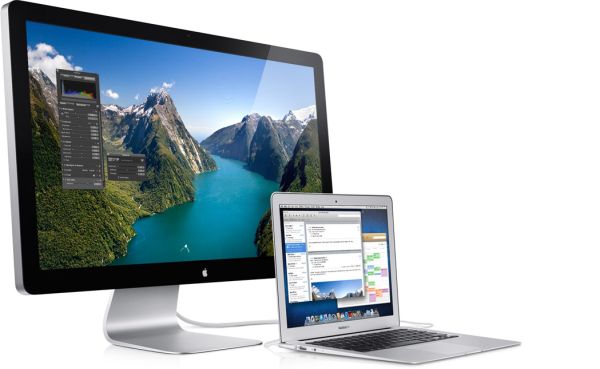
Lets go through the specifications now:
Essentially, the ATD is just a 27” Cinema Display with Thunderbolt. The screen size is the same, the resolution is the same, and I wouldn’t be surprised if the panel was exactly the same as well. From outside, you can’t see any difference, sans the extra ports. The dimensions are a match. Even the price stays at $999.Apple Thunderbolt Display Specifications Screen size 27" Resolution 2560x1440 Panel type In-plane switching (IPS) Brightness 375 cd/m2 Viewing angles 178°/178° Contrast ratio 1000:1 Response time 12ms Cables (built-in) Thunderbolt, MagSafe Ports 3x USB 2.0, FireWire 800, Gigabit Ethernet, Thunderbolt Video and audio FaceTime HD camera with mic, 2.1 speaker system Dimensions (WxDxH) 25.7" x 8.15" x 19.35" Weight 23.5lb Price $999
The difference comes when we talk about Thunderbolt and what it brings. The Cinema Display had three cables: Mini DisplayPort, MagSafe (power) and USB 2.0. Thanks to Thunderbolt, mDP and USB 2.0 have been merged into one and there are now only two cables: MagSafe and Thunderbolt.
Laptop-as-a-desktop users rejoice, the Thunderbolt Display features FireWire 800, USB 2.0 and Gigabit Ethernet - all of which are carried over the single Thunderbolt cable. There is also a second Thunderbolt port for daisy-chaining. As Thunderbolt provides up to 10Gb/s per channel, it’s more than adequate for 2560x1440 display and an external RAID box as we mentioned in our Promise Pegasus R6 & Mac Thunderbolt Review.
Apple's Thunderbolt Display really shows us the potential of Thunderbolt by integrating many different interface standards into a single cable. Honestly the only thing that's missing is audio-out on the Thunderbolt Display itself for users who prefer external speakers.
The biggest, and possibly the only, issue here is USB 2.0 - it feels so outdated considering that nearly all PCs have USB 3.0 now. We probably won't see USB 3.0 support from Apple until Ivy Bridge brings it natively in 2012. However, even with only USB 2.0, the ATD is a great option for the owners of 2011 Macs with Thunderbolt. For the owners of other Macs, it doesn’t offer much and you will be better off with a refurbished 27” ACD or 3rd party display.
The Apple Thunderbolt Display is available from Apple's Online Store with an estimated shipping time of 6-8 weeks.
More...
-
07-21-11, 08:10 AM #630
Anandtech: ECS P67H2-A Review: A visit back to Lucid's Hydra
If you remember back to October 2008, there were distinct murmurings about Hydra - an encompassing hardware and software solution to bring multiple GPUs together to act as one. Then, in January 2010, Ryan tested the Hydra chip, with the end result being: more development required. In my hands is the ECS P67H2-A, one of the latest boards to include the Hydra solution. Armed with the latest version of the Hydra software too, I'm here to review this board, to see if it works as a suitable P67 solution, and if Hydra has anything more to offer.
More...
Thread Information
Users Browsing this Thread
There are currently 18 users browsing this thread. (0 members and 18 guests)




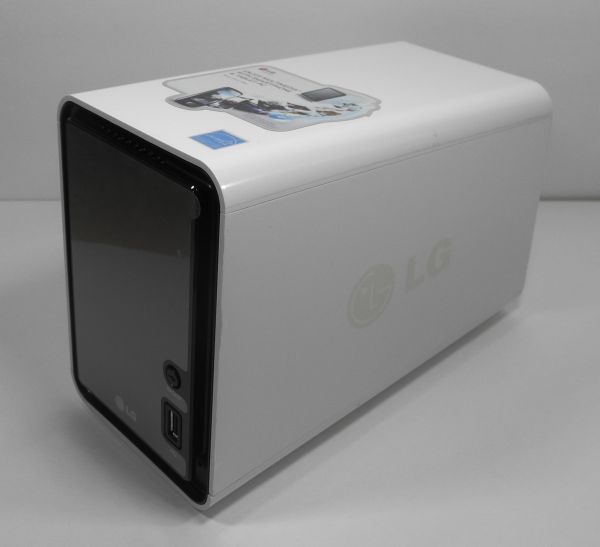

 Quote
Quote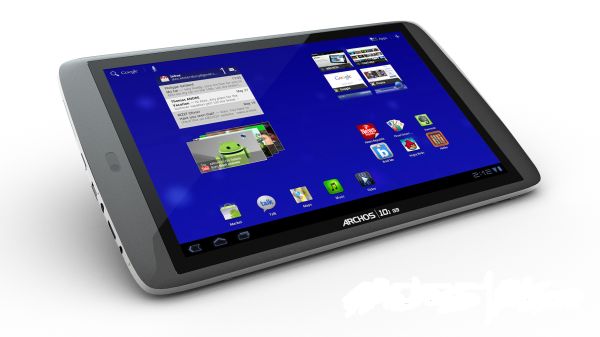
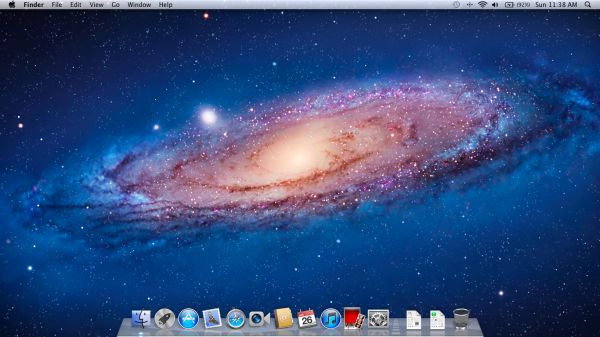


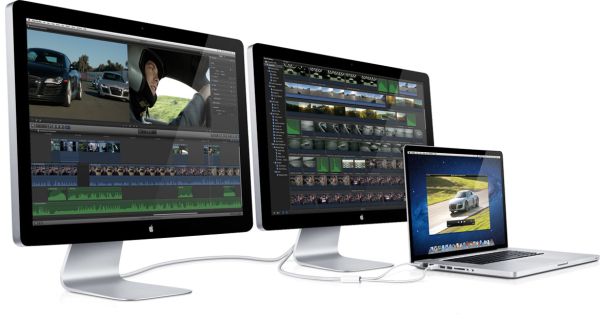

















Bookmarks